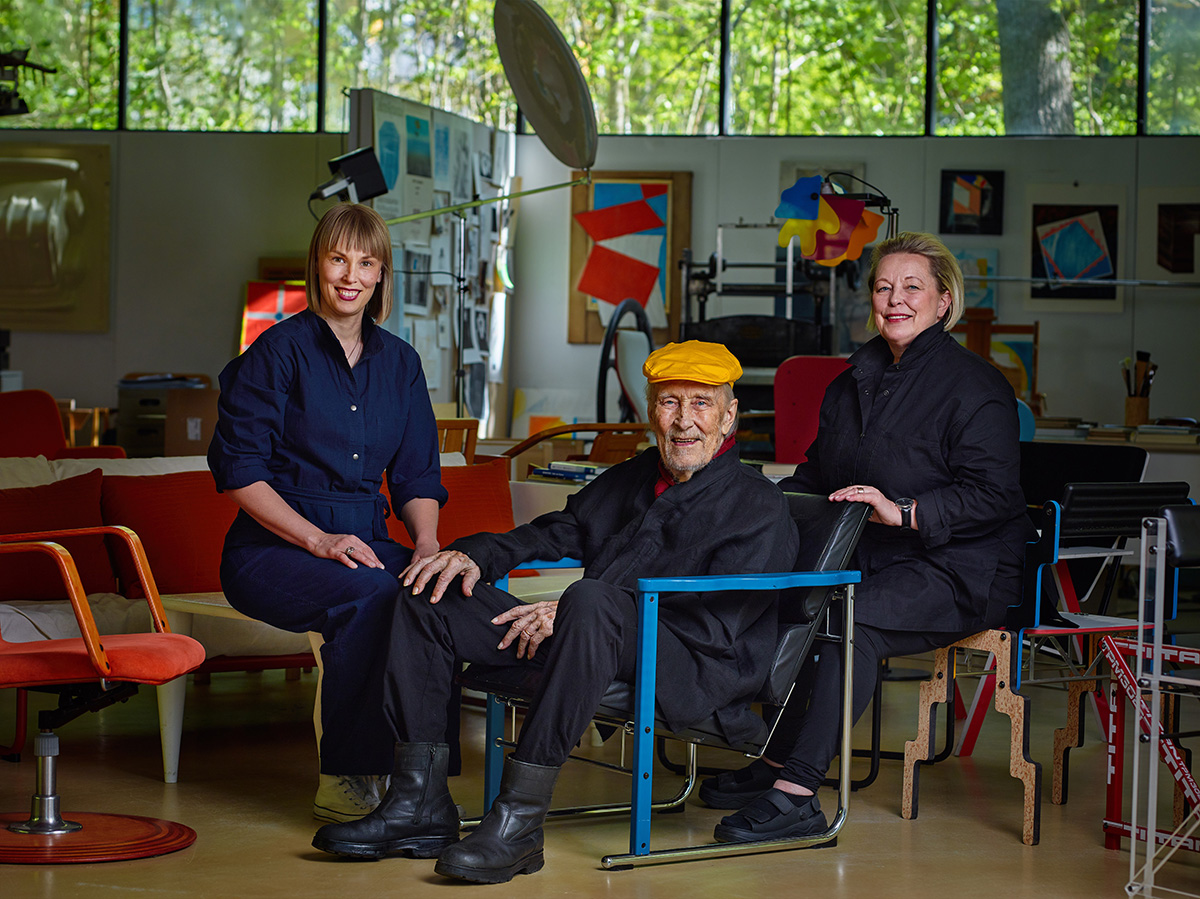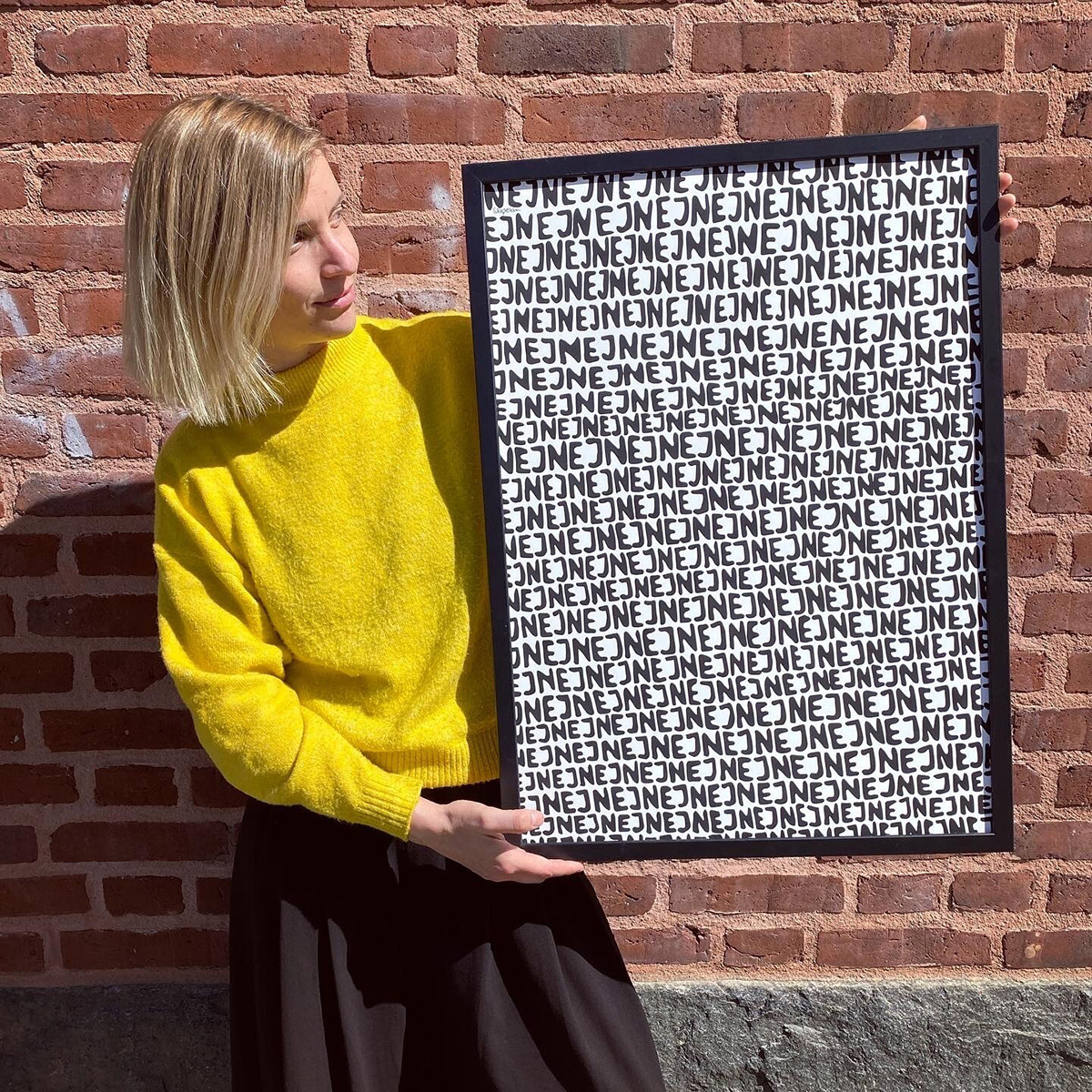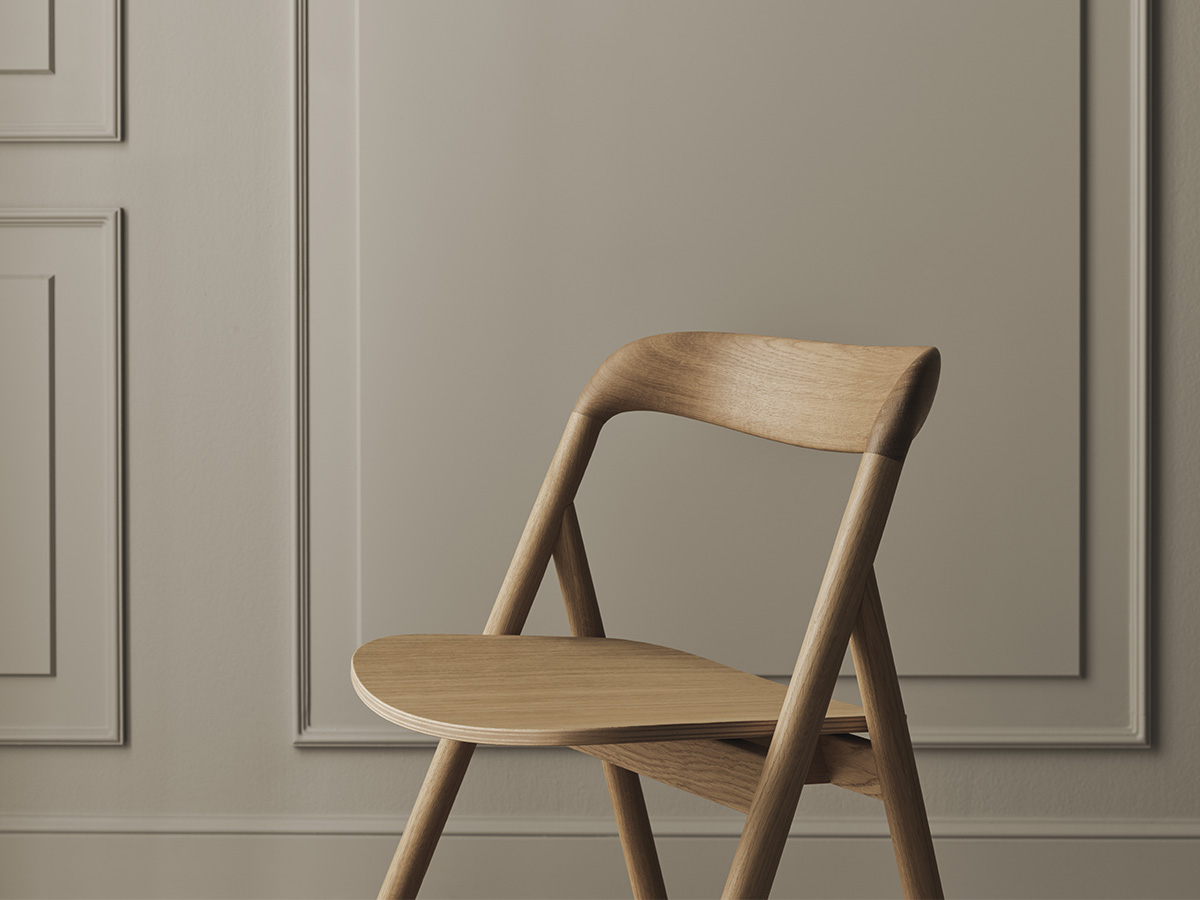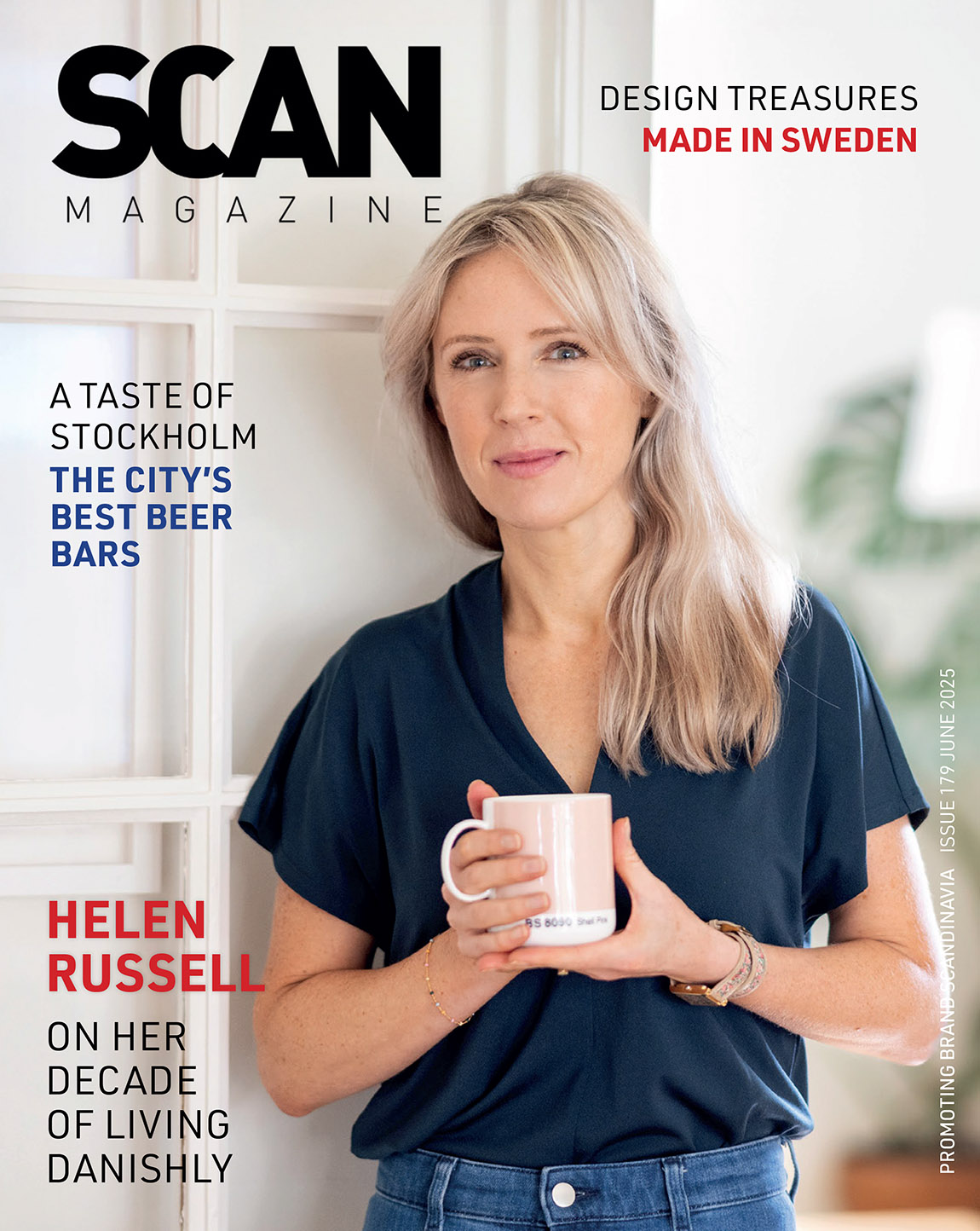Randers Reb: Bound by beauty, tied to quality
By Signe Hansen | Photos: Randers Reb
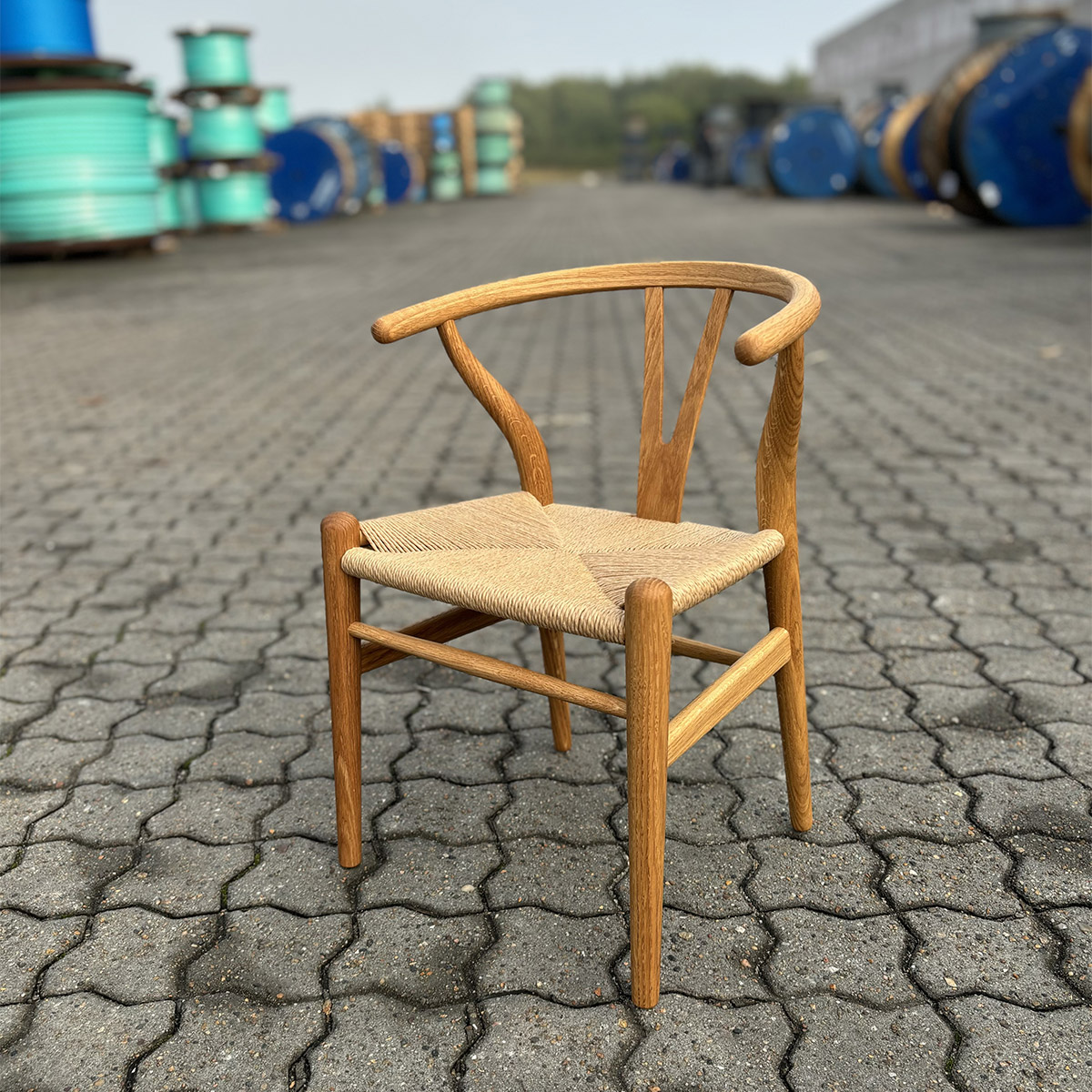
Hans J. Wegner’s CH24, better known as the Wishbone chair, is one of the many design classics that feature a hand-braided seat made with the Danish Cord from Randers Reb. FSC C130535
If you have ever admired a Danish design classic like Hans J. Wegner’s Wishbone chair or Børge Mogensen’s timeless People’s chair, chances are you have also admired the subtle beauty of the Danish Cord. Hand-braided into each seat is the quiet craftsmanship of Randers Reb, whose signature paper cord has become a hallmark of Scandinavian furniture design.
Created in the 1950s, the Danish Cord quickly became a favourite material of Danish design masters, and to this day, the cord is still renowned for its natural aesthetic, durability, and sustainability.
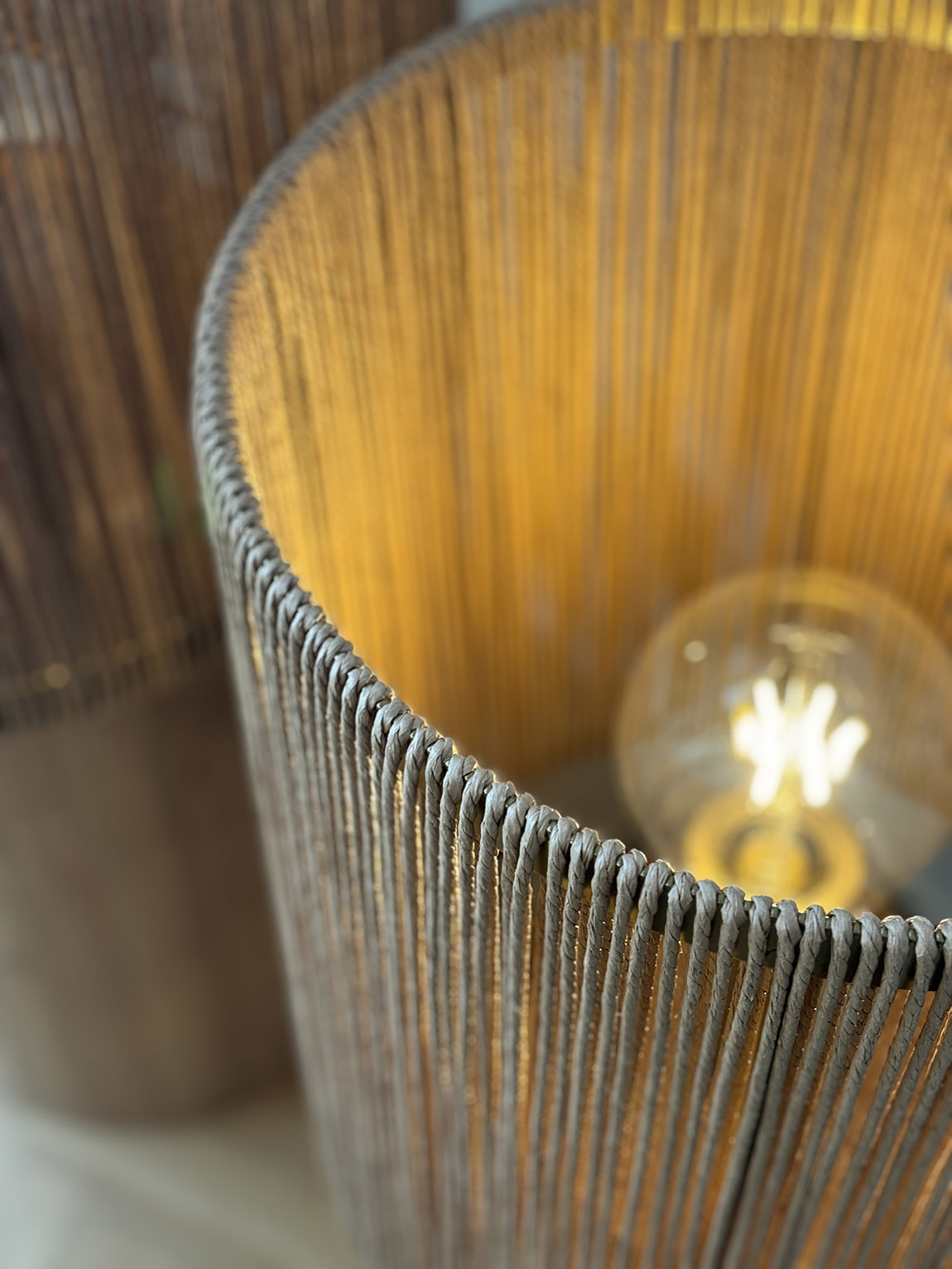
The Danish Cord is essential to the tactile beauty of the Stoa H120 floor lamp by designer Tinne Ottosen.
“This is the original paper cord,” explains Jesper M. Povlsen, sales and development. “There are other options on the market, but nothing matches the quality that Randers produces to this day.”
With its tactile warmth, the Danish Cord blends beautifully with natural materials such as wood, making it the material of choice not just for mid-century masters but also for a new generation of designers.
From maritime ropes to modern living rooms
Founded in 1840, Randers Reb began as a manufacturer of maritime ropes, producing cords from natural fibres and, later, steel wire. The company’s nearly two centuries of experience in rope production laid the groundwork for its later expansions into playgrounds and parks, and rope for furniture.
The venture into furniture began in the late 1940s and early 1950s, a time when Europe was recovering from war, and access to traditional seating materials like seagrass and rattan was limited. “Paper became the obvious alternative,” says Povlsen. “It could be produced in large quantities, its properties could be controlled, and its quality was uniform – something you can’t always count on with naturally grown materials.”
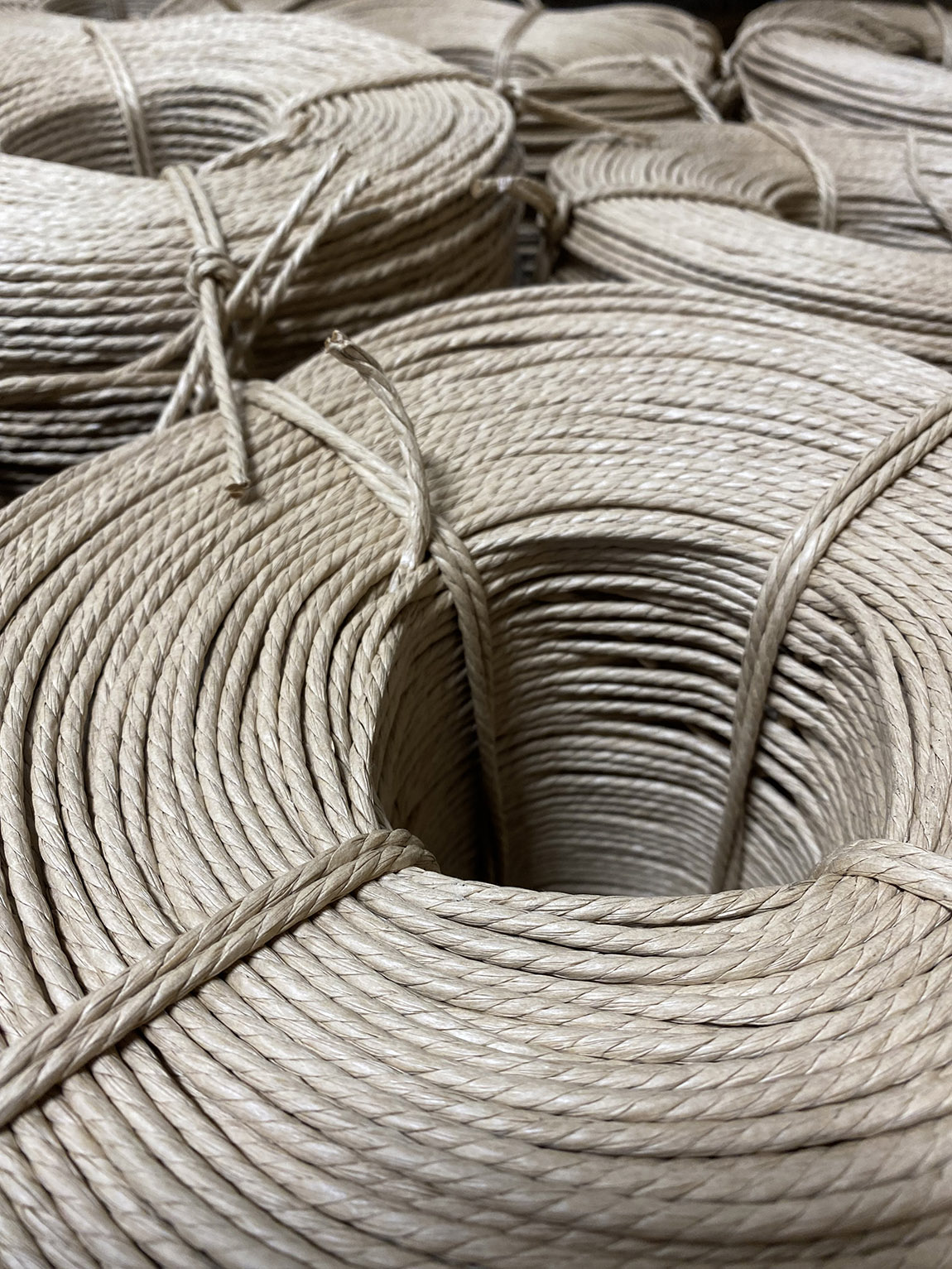
Danish Cord.
The woven paper cord offered a clean, uniform look that perfectly suited the minimalist ethos of Danish modern design. “It played very well into the strict design from Wegner and Mogensen,” explains Povlsen. “Maybe partly due to Wegner’s success, a long tail of new designers was looking to him for inspiration, which is why so many Danish design chairs carry this particular form of seat.”
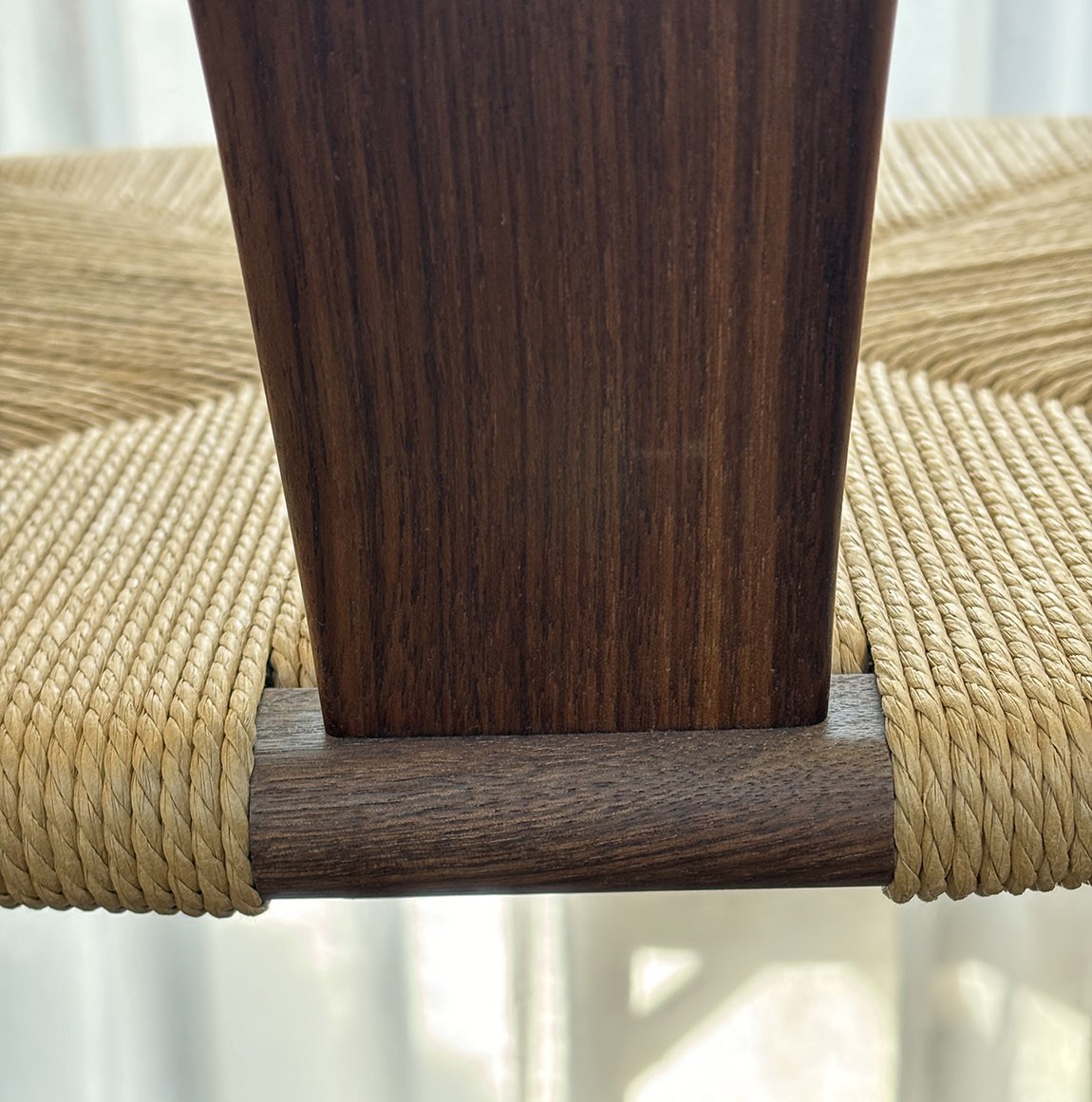
Quality and craft
Creating a Randers Reb paper cord seat is a meticulous process. A single dining chair seat takes about an hour to braid by hand, more for lounge chairs. The craftsmanship involved is characteristic of the quality of the product, and, on its end, Randers Reb makes sure to never compromise on that quality. That, for instance, means that the company avoids making changes and stays with long-term partners.
“We supply cord to large companies that produce thousands of chairs each month, and that means the risk of making changes to gain a little or be able to lower the price is just too big,” stresses Povlsen. “If you put 1,000 or 2,000 chairs on the market each month expecting them to last ten years, and then find the new material can’t handle the challenge, you’ve already placed thousands of chairs before you find out. That’s why we don’t make changes to the production, the material we use, or the paper. We stick to the quality we know, the quality our clients know, and the quality everyone trusts to do what it’s supposed to do.”
This commitment to quality runs through every division of Randers Reb – whether crafting nets for playgrounds, ropes for maritime use, or cords for enduring design classics.
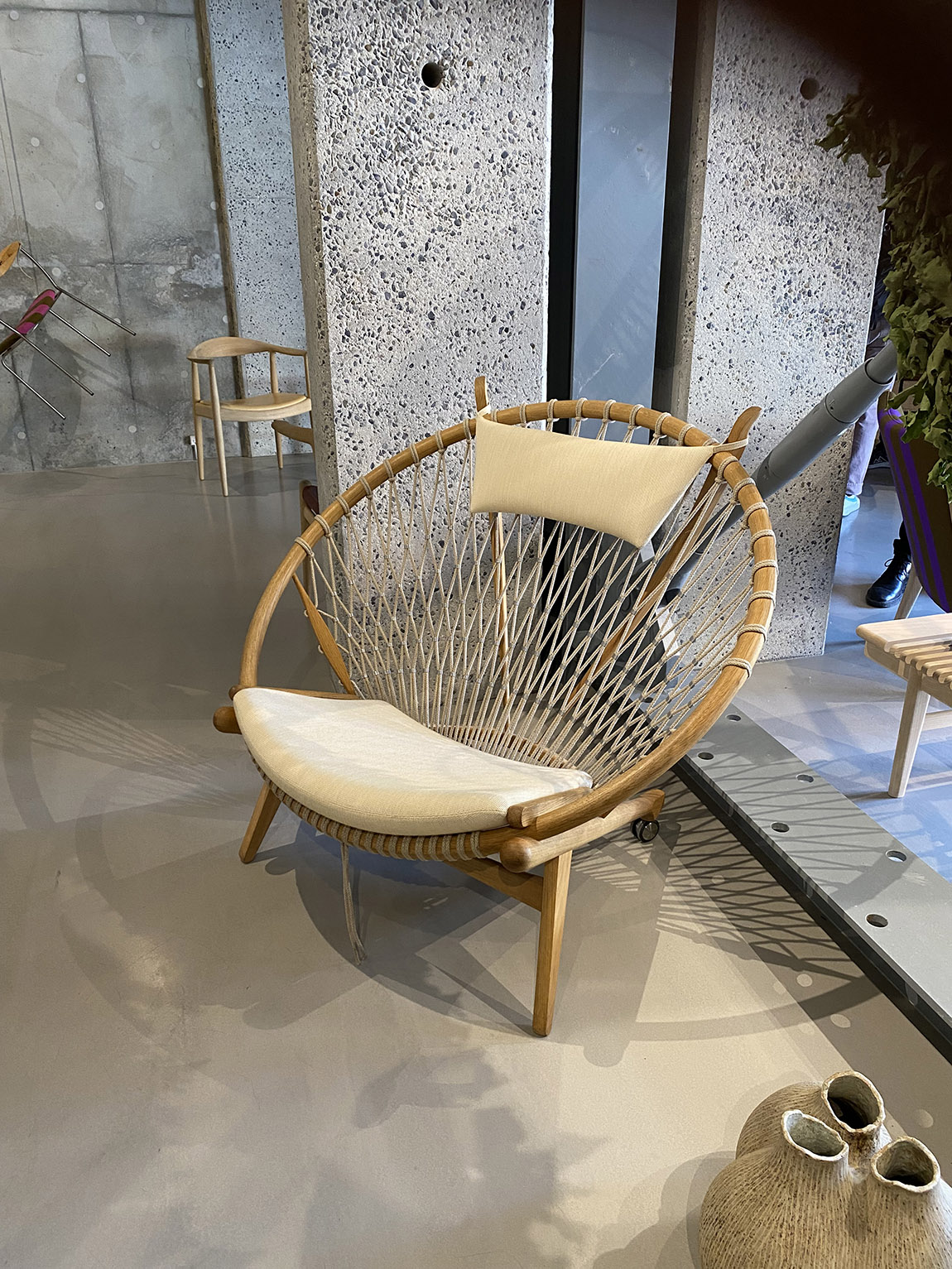
Crafted with Flagline, the Circle chair is one of Wegner’s most characteristic designs.
Sustainability in every strand
While sustainability is one of the big buzz words in design, it is not an afterthought for Randers Reb – it is woven into every fibre. The company uses FSC® certified paper sourced exclusively from European suppliers and does not add any chemicals apart from wax during the production process, which gives it natural resistance to stains and fluids.
This means that the paper cord is not just biodegradable, it is compostable. “Clients have told us that they’ve removed old seats and thrown them into compost heaps. After a year or two, they’re completely gone,” says Povlsen and continues; “Despite this, we see seats that last for 20, 30, even 40 years. It really is an inherently sustainable product.” On top of this, all production is powered by renewable electricity.
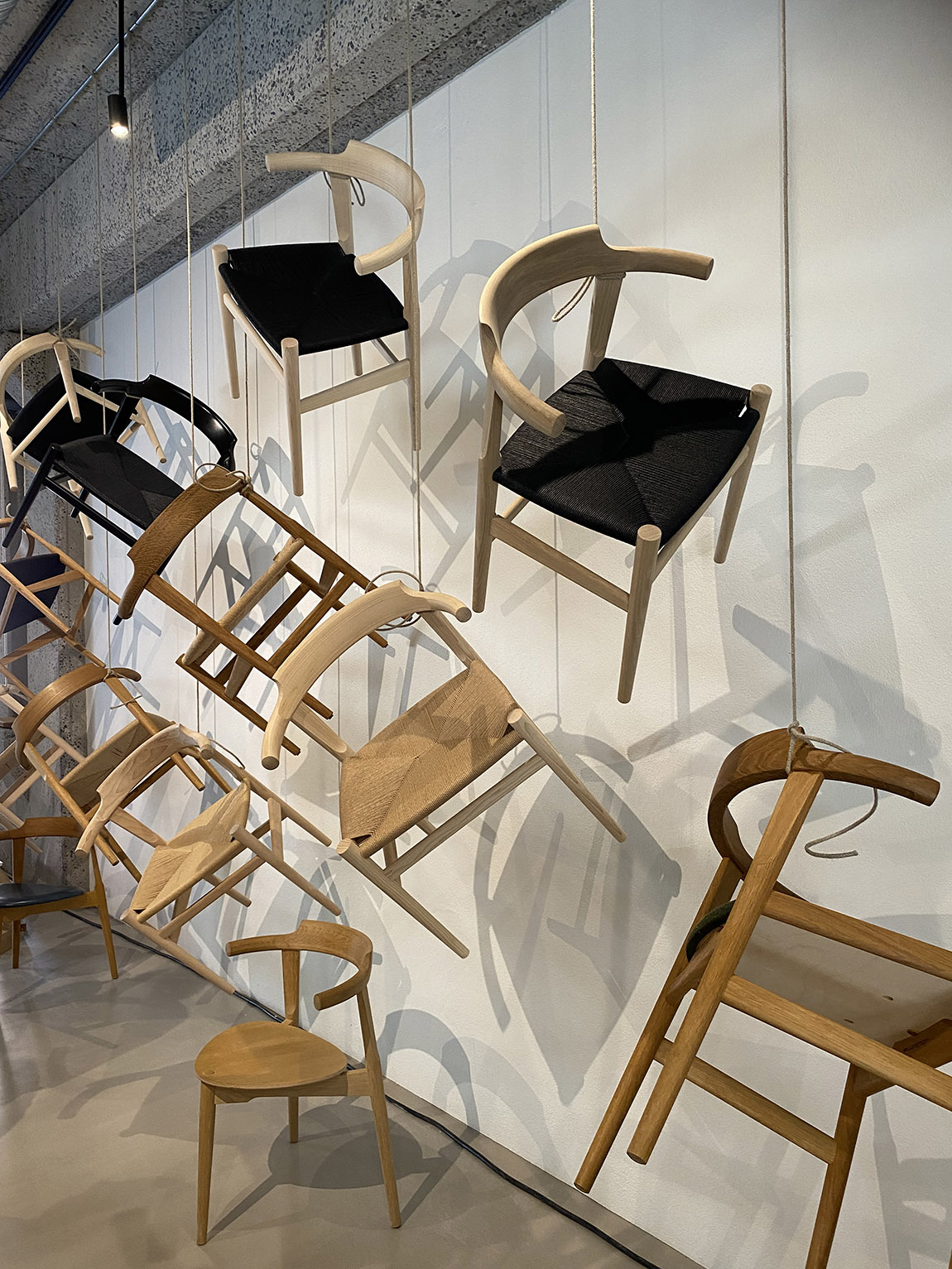
Looking forward: new products and new markets
Staying rooted in its tradition of quality and craftsmanship, Randers Reb continues to evolve and expand its portfolio. One of the furniture division’s recently relaunched products is Flagline, a thicker, braided cord available in multiple colours. The cord was originally used in designs by Hans J. Wegner and Poul Kjærholm, and has stayed relevant in various designs over the years, most recently used by contemporary designer Kasper Throup, who won acclaim with a Flagline-seated chair on Danish TV series Danmarks Næste Klassiker.
Most recently, the company has launched a synthetic fibre line designed specifically for outdoor furniture – a fast-growing market. “Ropes and cords are really seeing a resurgence,” says Povlsen. “At Milan Furniture Fair, ropes were everywhere. We’re gaining traction, especially in outdoor furniture. That’s the next thing we want to go for.”
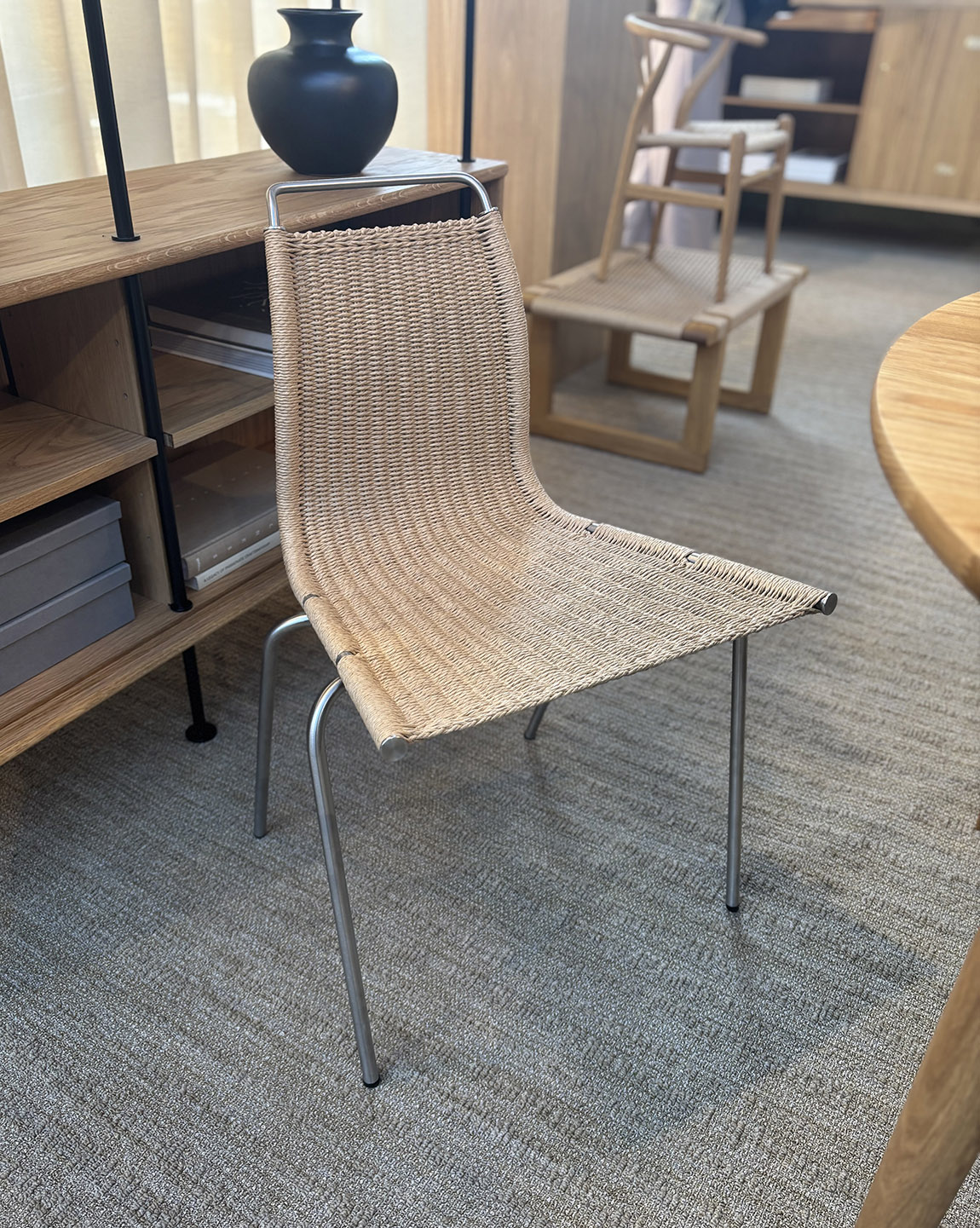
The PK1 chair by Poul Kjærholm.
Web: www.randers-reb.com
Instagram: @randersreb_furniture
LinkedIn: randers-reb-international-a-s
Subscribe to Our Newsletter
Receive our monthly newsletter by email

